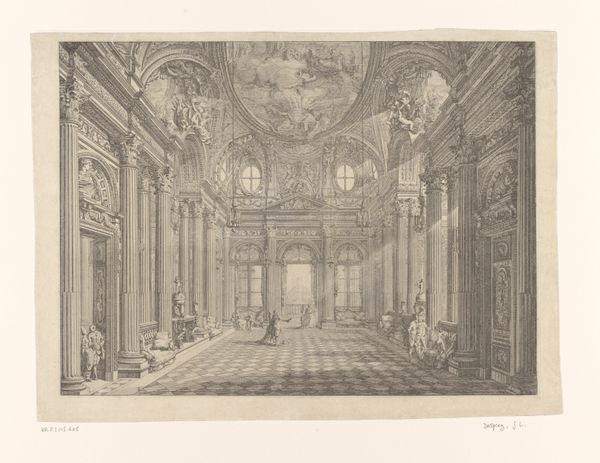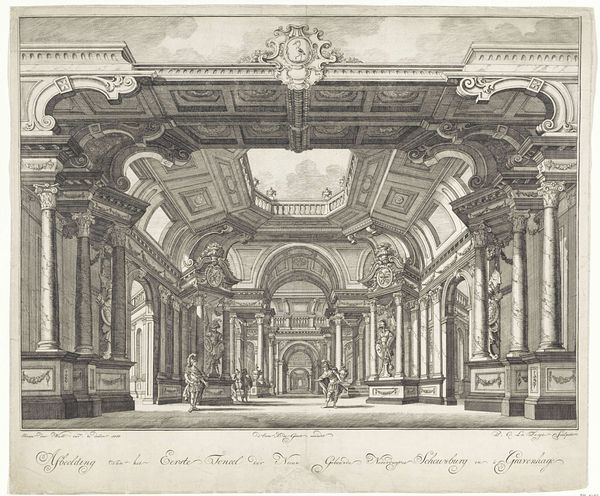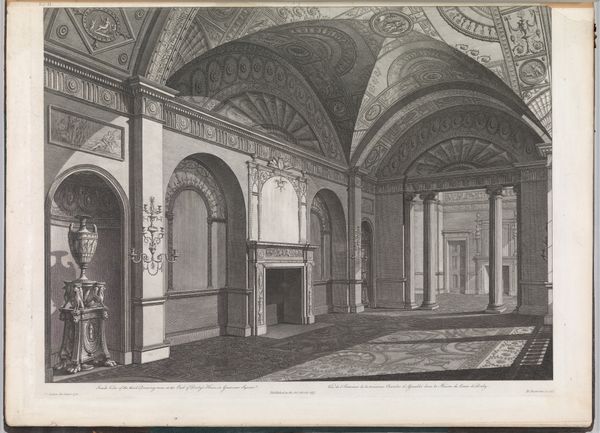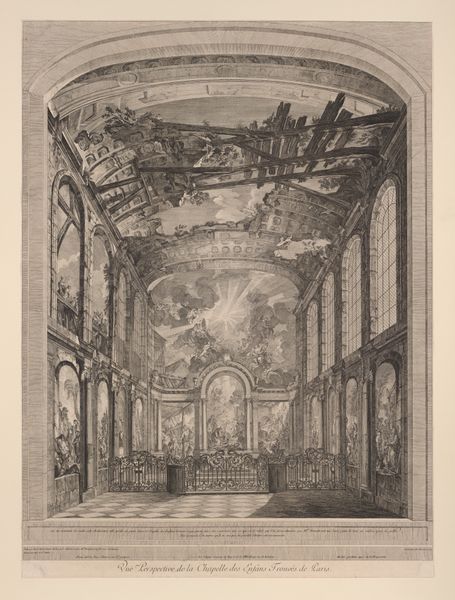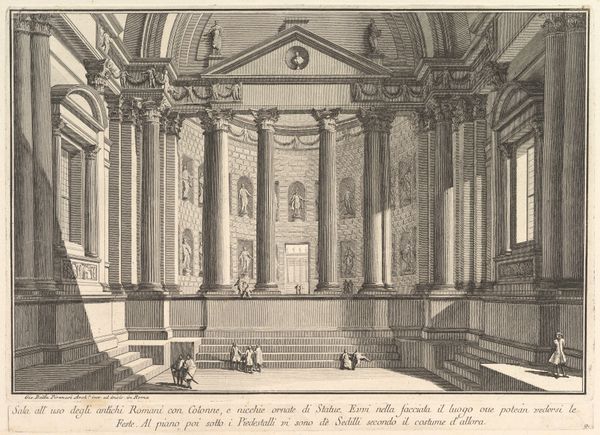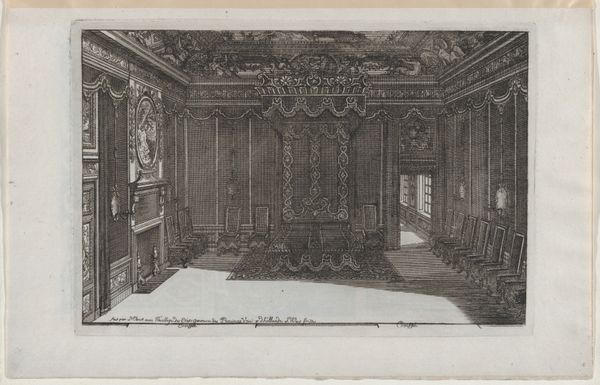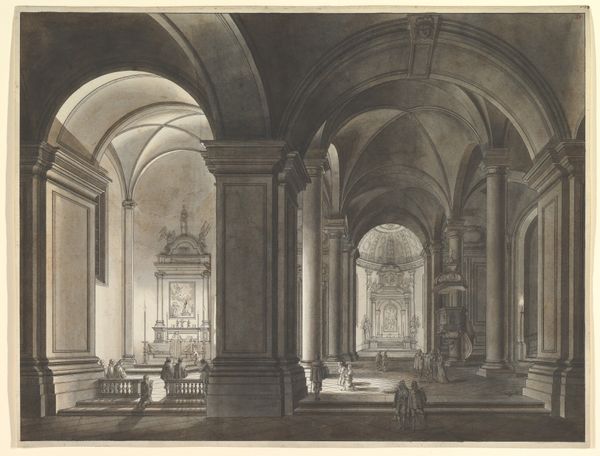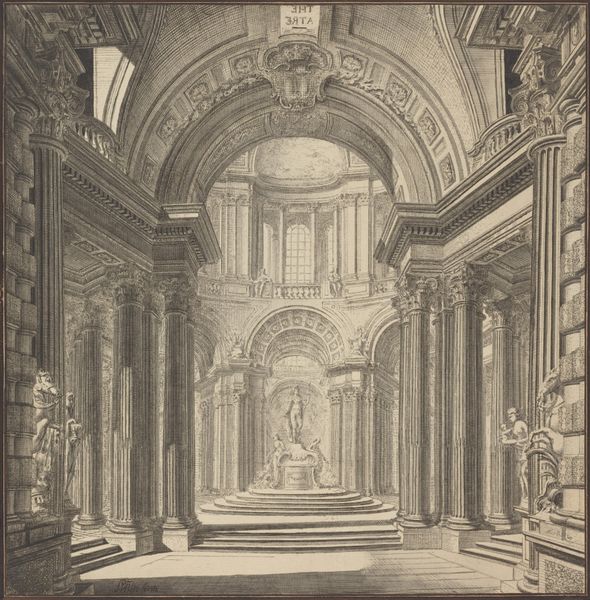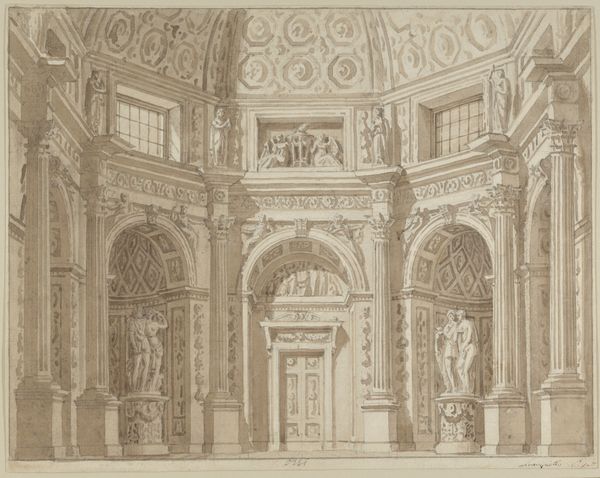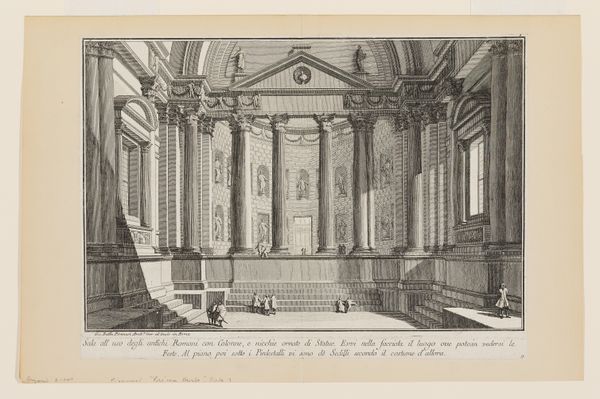
drawing, print, etching, engraving, architecture
#
drawing
#
neoclassicism
# print
#
etching
#
cityscape
#
history-painting
#
engraving
#
architecture
Dimensions: sheet: 14 13/16 x 19 5/8 in. (37.6 x 49.8 cm) plate: 13 5/8 x 18 1/16 in. (34.6 x 45.9 cm)
Copyright: Public Domain
Editor: This is Louis Jean Desprez's "Interior of the Palazzo Spinola, Genoa," from 1777. It’s a drawing that has been printed as an etching or engraving, depicting a grand interior. It's astonishingly detailed, almost hyper-realistic. What do you see in it from your perspective? Curator: It's a fascinating image that speaks volumes about 18th-century power structures. Look at the sheer scale and ornamentation of the palace, and its function as a site of aristocratic gathering. It served not just as a private residence but as a stage for projecting power and cultivating relationships. It visually codifies the identity of the city's dominant figures and plays a crucial role in cementing the family’s historical place and significance. What purpose do you think this drawing served? Editor: I guess it would have circulated within elite circles, acting like a visual symbol of prestige. It might even be a souvenir, reminding its owner, or those viewing the image, of the family and place, helping preserve memory. Curator: Exactly. These images were not simply neutral depictions of architecture. They helped reinforce class boundaries by creating a public perception of exclusivity and, potentially, inaccessibility to the average person. In today's world, would such images have the same effect? Editor: That’s a great question. Today, accessibility via the internet and social media changes everything. An image like this might now be perceived very differently by the public. The intention and the means of distribution affect the interpretation of this work. Curator: Precisely. And that reflects how societal power dynamics continue to shift. Art offers a vital window into understanding those changes over time. Editor: It really makes you consider who the intended audience was, and the message they were meant to receive.
Comments
No comments
Be the first to comment and join the conversation on the ultimate creative platform.
